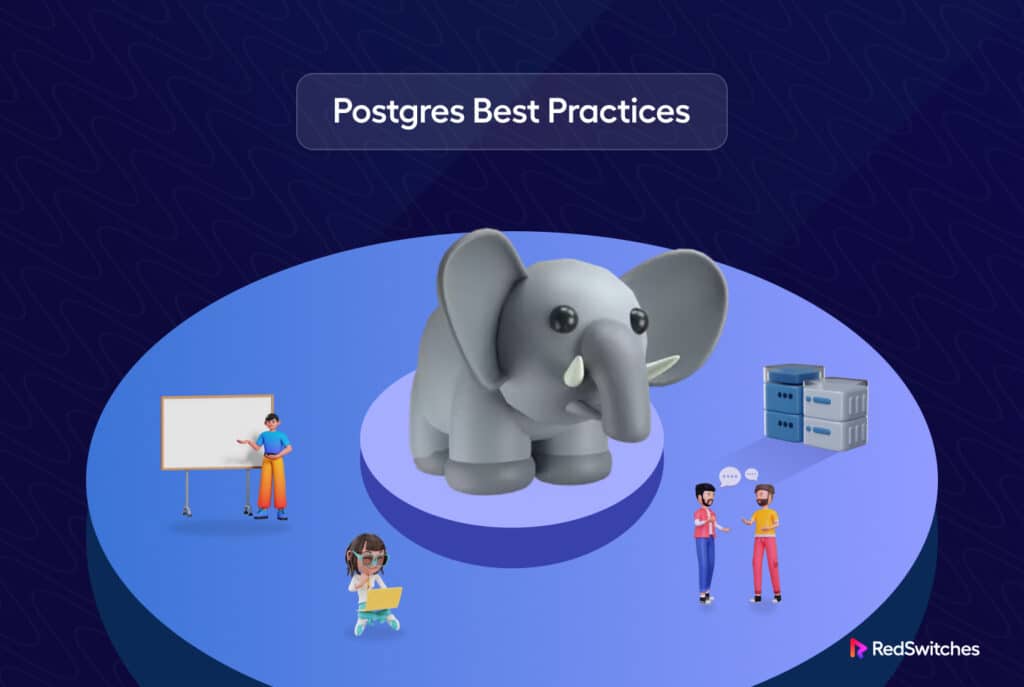PostgreSQL, also known as Postgres, is a feature-rich and powerful open-source relational database management system (RDBMS).
As with any database system, following best practices are critical for achieving optimal performance, data integrity, and scalability.
We’ll present some Postgres best practices that you can apply to ensure smooth database operations.
Table Of Content
- Make Use of Connection Strings and Environment Variables
- Rotate Credentials Regularly
- Use a BIGINT or a UUID For Primary Keys
- Implement Connection Pooling
- Conclusion
Make Use of Connection Strings and Environment Variables
The fundamental security advice that developers often ignore is this: Never save your database credentials in your codebase!
While you may think of your code as proprietary, it is of no considerable value for hackers and cybercriminals. The information, such as credentials you hardcode for convenience, gets the most attention.
Suppose you need to deliver critical credentials to trusted modules within your codebase. In that case, we recommend exposing your Postgres database connection string as an environment variable called DATABASE_URL (supported by all popular dev frameworks).
Rotate Credentials Regularly
Changing your database credentials regularly (even within your organization) is an intelligent practice.
However, many admins overlook changing credentials when offboarding a team member. All it takes is one disgruntled employee for an incident to happen. If an env file from a few years ago falls into the wrong hands, your entire infrastructure might become vulnerable instantly.
Rotating credentials month after month might look like a time-consuming ritual, but with automation and strict policies, this security process will become second nature for the organization.
Use a BIGINT or a UUID For Primary Keys
A common mistake we noticed in many applications is the use of ‘INT’ instead of ‘BIGINT’ for primary keys (every Django application, for example, does this by default).
The value in your database eventually surpasses the “storage capacity” of an INT, and you must move to a BIGINT. Once the issue has been detected, converting a table from INT to BIGINT typically takes about 4 hours.
BIGINT is a better choice for a default primary key because it is less expensive to store and index.
That’s why we utilize UUIDs In all of our Postgres databases:
-- Enable pgcrypto for UUID support. CREATE EXTENSION pgcrypto; – Table: notes CREATE TABLE notes ( uuid UUID DEFAULT gen_random_uuid(), body text NOT NULL, byline text, CONSTRAINT notes_pk PRIMARY KEY (uuid) );
Implement Connection Pooling
If you have a high-throughput Postgres database server, you should set up your clients to use PgBouncer, a lightweight PostgreSQL connection pooler, instead of directly connecting to the server.
Connection pooling provides several performance benefits and significantly increases the predictability of your database’s query performance metrics.
However, we handle that for you here at Redswitches!
Redswitches powered Postgres database experience eliminates the need to run your instance of PgBouncer because it comes pre-installed, and we adjust all settings to your preferences.
Conclusion
Following these PostgreSQL best practices will assist you in optimizing performance, improving data integrity, and increasing your database system’s dependability.
Remember that best practices can differ depending on your application’s requirements.
It is always a good idea to monitor and evaluate the performance of your database regularly to identify areas for improvement and to stay current with the PostgreSQL environment.
FAQs
Q: How can I ensure data integrity in PostgreSQL?
Here’re a few tips for improving data integrity in PostgreSQL:
- Define primary keys, unique constraints, and foreign key constraints to guarantee data consistency.
- Use domain constraints and check controls to enforce business rules.
- Use triggers to implement sophisticated integrity restrictions.
- Using integrity tests and data validation scripts, validate and sanitize your data regularly.
Q: How can I boost the speed of my PostgreSQL database?
Boosting the speed and performance of a PostgreSQL database is a matter of following these pointers:
- Use proper indexes, query strategies, and rewriting inefficient queries to analyze and optimize your questions.
- Analyze and vacuum your database regularly to reclaim space and update statistics.
- PostgreSQL configuration options should be tuned to your workload and hardware.
- Use connection pooling to manage concurrent connections efficiently.
- Consider using caching technologies to reduce the number of database accesses for frequently requested data.

